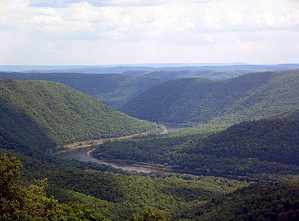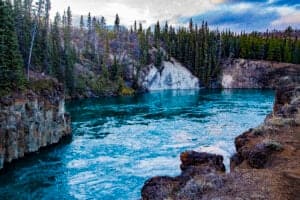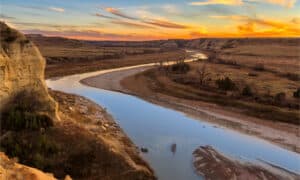The Arkansas River is a 1,469-mile major tributary of the Mississippi River. It is the second-largest tributary of the Mississippi and the sixth-longest river in the United States. This impressive river flows east and southeast through Arkansas, Oklahoma, Colorado, and Kansas. It is the 6th-longest river in the United States by mileage of the main stem. Today, we’ll answer an important and complex question about this amazing river – is it safe to swim in?
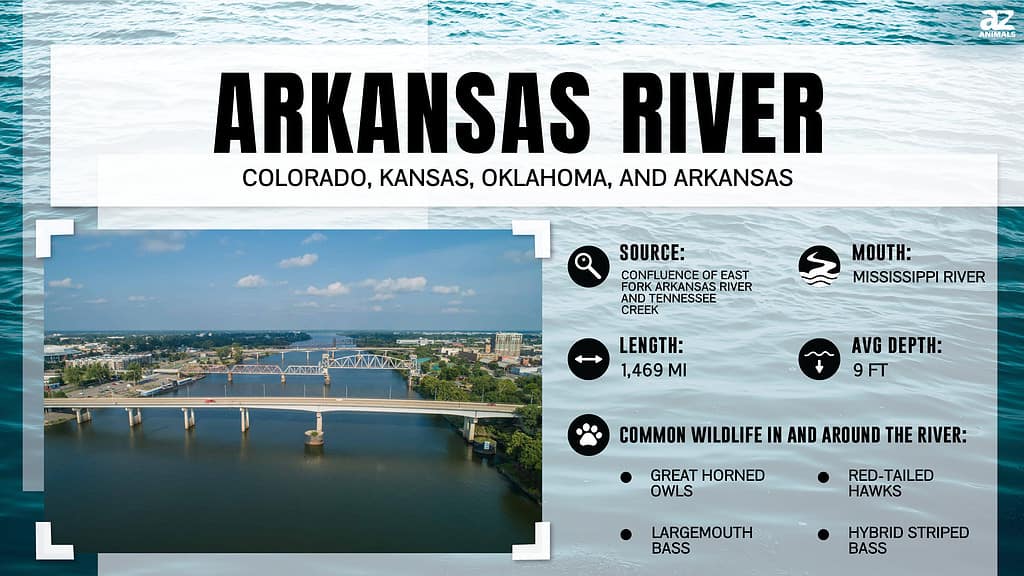
Where Does the Arkansas River Start and End?
The Arkansas River begins near Leadville, Colorado. Its headwaters are fed by snowpack in the Sawatch and Mosquito mountain ranges. This snowpack converges in the Arkansas River Basin and accounts for much of the beginning flowage of the river. This river has nearly 60 tributaries, including the Verdigris and Illinois Rivers. Its mouth rests in eastern Arkansas where it meets the Mississippi River. We’ve included a map of where it starts and where it ends.
You can easily visit the headwaters of the Arkansas River. There is a recreational area around the headwaters that offers camping, wildlife viewing, hiking, and access to Turquoise Lake. This area is where the waters of the river will be the cleanest and clearest. The waters surrounding the town of Leadville are very clean and high in quality, but they are also freezing cold. Swimming in the area is not recommended without warm swim gear like a wetsuit. You can see that the Arkansas River is fed by Tennessee Creek and that the headwaters rest only a few miles northeast of the town of Leadville.
Now, let’s head to the mouth of this mighty river. The Arkansas River meets the Mississippi River near the borders of Arkansas and Mississippi. This convergence spot is not very close to any major cities, but a couple of smaller towns sit nearby. These towns include Kelso, Arkansas, and Beulah, Mississippi. You can go see local wildlife near the confluence of the two rivers at Trusten Holder State Wildlife Management Area. This area is popular for hunting and trapping but also contains a few primitive campsites.
Depth and Width
The Arkansas River varies a lot in its depth as it flows through the United States. Some areas in the river are as little as 3 feet deep, while others reach depths of 27 feet or more. The river reaches widths of just over half a mile. The Arkansas River Valley is much wider – up to 40 miles wide. You can see from this that the terrain carved by rivers is often much more expansive than the rivers themselves.
Is the Arkansas River Safe to Swim in?
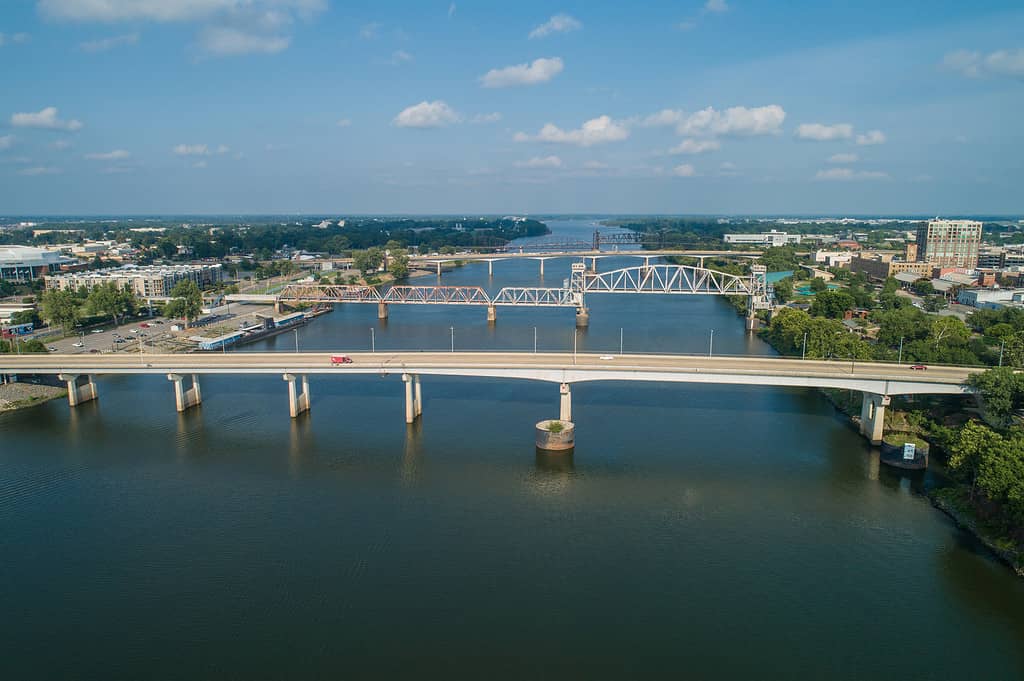
The Arkansas River is a 1,469-mile major tributary of the Mississippi River.
©iStock.com/felixmizioznikov
Officials in most states say the Arkansas River is not safe to swim in. Many cities along its banks, including Tulsa, Oklahoma, and Witchita, Kansas actually have bans on body contact with the water. This is to protect people from the harmful contaminants in the river. Pollution from agricultural runoff and industrial areas makes much of this river unfit for swimming in. Additionally, the river has an incredibly strong current in many places that make it hard to swim in. Even without all of the bacteria, algae, and chemical pollutants, the river poses risks to swimmers of all skill levels.
Overall, it is better to find a different place to cool off on a hot day. Other activities along the river that you can participate in include boating, kayaking, and white-water rafting. In fact, white-water rafting is a really popular activity on parts of this river and draws over 175,000 people a year to its waters. Little Rock, Arkansas is a great spot for these activities and many residents can find recreation along the river in their own backyards. Please note that the state of Arkansas is home to alligators. Arkansas holds the only portion of the Arkansas River that has an alligator population. This is another potential risk factor when looking at entering its waters.
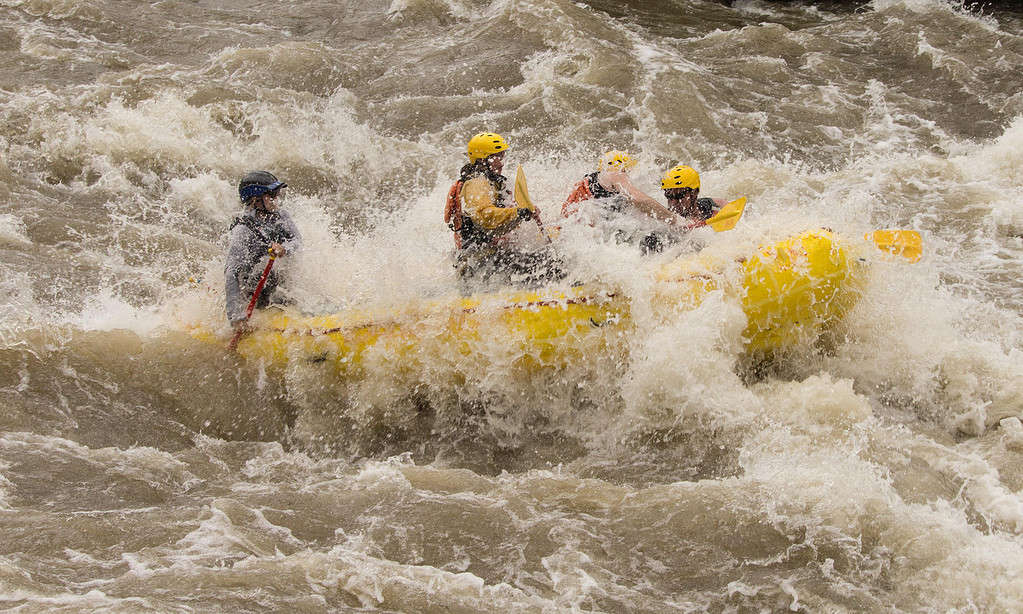
White-water rafting draws over 175,000 people a year to the Arkansas River.
©Rich Flubacker/Shutterstock.com
What’s in the Arkansas River?
We will use data from the United States Geological Survey site to talk about water quality in the Arkansas River, along with some other sources. This data is extensive and covers a variety of areas along the river. Several conservation collaborators help collect this data, along with water utility districts and state departments. The data looks at pesticides, dissolved solids, bacteria, major nutrients, and several other factors.
The study data found many different things in the river. Mineral contents of the river include iron, selenium, and manganese. The report data also found evidence of many different types of pesticides and suspended solids in the water. The water also contains mercury and a few other radiochemical constituents. Dissolved solids from mines in Colorado and other states flow in the water, as well. Mine drainage is a huge factor in water cleanliness and heavy-metals contamination.
Over-irrigation in Kansas contributes to the pollution in the river, as well. Oil and gas development along with stormwater from major cities along the river add more issues. The large agricultural industry surrounding the river in Kansas and Oklahoma adds too much nitrogen to the water, resulting in dangerous levels of algae bloom in some areas. When a river is too dense in minerals and sediment, there is no room for oxygen. This makes some water areas anhydrous and turns them into dead zones. Without oxygen, there is no room for life. The waters from the Arkansas River contribute to the Mississippi River’s infamous dead zone in the Gulf of Mexico.
Can You Fish in the Arkansas River?
Despite pollution and other issues, the Arkansas River is still a notable place for fishing. In fact, portions of the river in Colorado have gained national esteem for the fishing quality. The best time for fishing along the river is in the spring, but fishing opportunities abound all year round. The variety of fish you can catch depends on where you are on the river. In Colorado, you can catch a lot of bass, while in Arkansas it is brown trout.
The alligator gar is the largest fish in this river and is sometimes touted as a southern delicacy. You cannot eat the eggs of this fish as they are toxic and can cause sickness. The fish is frequently compared in texture to chicken and in taste to alligator meat.
The river is also known for its crappie and catfish fishing. Make sure to check for local fishing rules and get the proper permitting before going fishing on the Arkansas River.
Wildlife on the Arkansas River
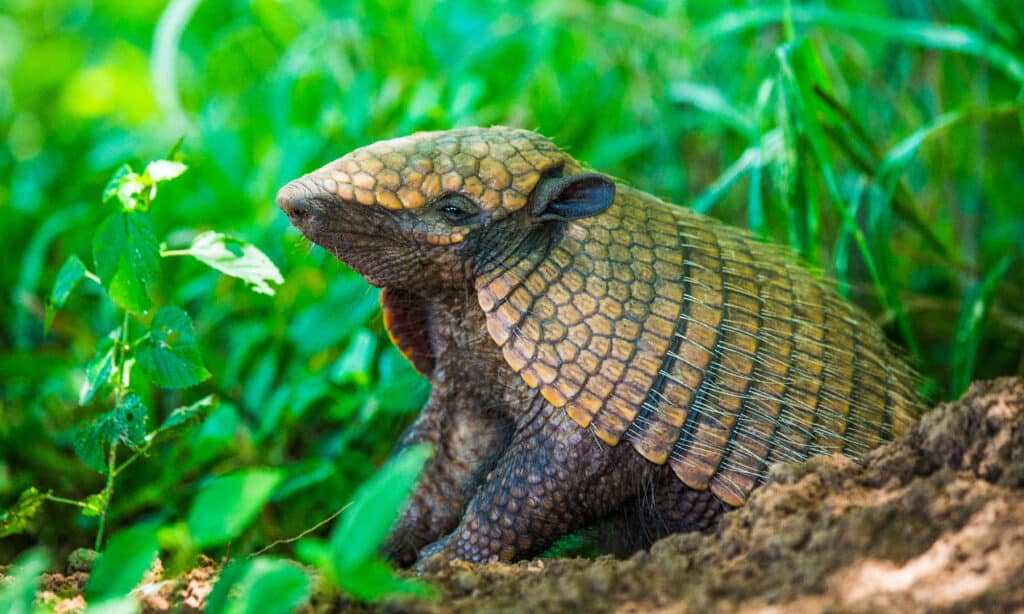
You can sometimes see an
Armadillo
along the waterways of Oklahoma.
©mariamalaya/Shutterstock.com
It is harder to talk about the wildlife along rivers than in other areas. That is because of the span of some rivers. A river that only flows in one region is easy to look at in terms of wildlife because the entire river is contained in one area. The Arkansas River flows through four states, so it is harder to list the massive variety of animals that rely on its flowage. We’ll break this down into sections and list just a few animals that live in or near the river in each state. Please note that most of these animals can be found in all of the four states the river touches. That means that these lists are not exclusive to the areas they cover. You will find animals such as white-tail deer in all four of the states mentioned.
Colorado
- Bighorn sheep
- Elk
- Moose
- Golden Eagle
- Bald Eagle
- Great horned owl
- Brown trout
- Rainbow trout
- Bobcat
- Mountain Lion
Kansas
- Bats
- White-tail deer
- Beaver
- Skunk
- Mole
- Whooping crane
Oklahoma
Arkansas
- Osprey
- Loons
- Heron
- Black bear
- Alligator
The photo featured at the top of this post is © iStock.com/felixmizioznikov
Thank you for reading! Have some feedback for us? Contact the AZ Animals editorial team.



